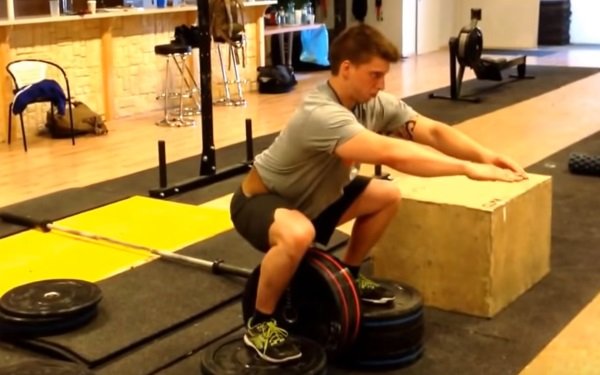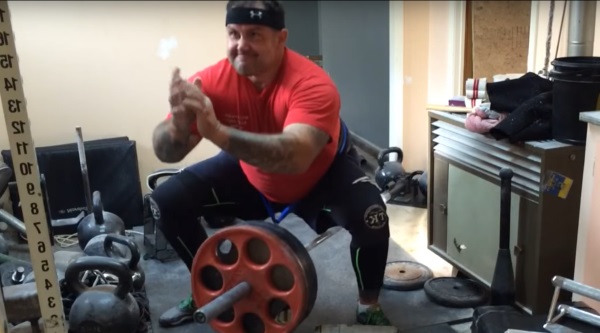Hip belt squats are an area of lower body training that is often overlooked. Powerlifters and serious weightlifters have been using them for a very long time to enhance the strength of their legs. But they are often not considered by mainstream gym users or they don’t even know about them.
Squats with a hip belt are unique because they provide a method to squat bilaterally without adding pressure to the spine. This makes it an especially good fit for back injuries. Many people with back pain struggle with the loads on the spine when it comes to regular squats but hip belt squats get around this by placing the load on the legs and hips instead.
Hip belt squats also work very well for lifters with shoulder wrist or elbow injuries which prevent them from supporting the bar during normal squats.
Hip squats also target the lower body in a more direct way than back squats. Back squats are often limited by the strength of the lower back while hip squats circumvent this. By doing this, they work in a similar way to a hack squat machine or leg press delivering little to no stress on the back while still providing the balance and stabilization benefits of a normal squat.
Something else people don’t realize about hip squats is that they are very portable. They are greats to do in a gym that is crowded as can be performed in many different places while people are still queuing for the squat rack.
Now, hip squats are not the only leg exercise that you should do, but they are definitely beneficial exercises to add to your routine.
Getting Started With Hip Belt Squats
One issue with hip belt squats is that they can be difficult to set up sometimes. One of the best ways to perform them is via a machine, but many gyms do not have these available. If you have access to one, you are very lucky.
The most common way of performing squats with a hip belt is to stand on a pair of boxes or benches with a space between them for the wait to hang which is attached to you with a dipping belt.

Another useful piece of equipment is squat shoes. These can drastically improve your squatting ability. Hip belt squats are effective for working the legs but some stronger powerlifters can find that they are limited on how much weight they can attach to their belts. Also, some gyms do not have enough weights or dumbbells to make this challenging enough for the legs. A good way to get around this limitation is to get a loading pin. This allows you to stack many plates vertically and attach them to your belt. This should be more than enough weight that you will ever need.
There are a few things to note when performing dip belt squats while standing on boxes or benches. Be sure to perform them with the boxes on a grippy surface as they can tend to drift apart during your set. If not prevented, this could end in a groin strain so performing them on a rubber floor is recommended. Another minor issue with this way of performing belt squats is that it can be a little unwieldy to get in position and even more difficult to get down off the boxes afterward. There is an alternative, however, which we will go over shortly.
Dip belt squats with a cable
This requires a cable station with a low cable and also your regular dipping belt. Attach your belt to the low cable and move about 8 feet away from the machine. Then perform a squatting motion. As you rise there should be some resistance created by the cable machine.
When performing this you have to make sure that you grip the floor with your feet and push back slightly throughout the exercise to stop yourself from being pulled back toward the machine by the cable. This cable also creates a constant load on the legs and not just when going up through the squat.
T-Bar Hip Belt Squats
For this, you will require a barbell or T-bar and dip belt. If you’re using a barbell, you should either place one end against the wall or have someone stand on it to create a T-bar effect. With your newly created T-bar, you are almost performing good old T-bar rows but squatting instead of actually rowing.

You should attach some weights to the opposite end of the barbell to the wall and then squat down with your dip belt and attach your belt to the bar. You may have to wrap your chain around it a few times so it is short enough. Now as you stand the end of the barbell should come with you while placing the load on the legs.
This works in a similar way to normal hip belt squats with a loading pin but it is easier to get into position and you don’t require a loading pin. It is also more comfortable than having the weight dangle between the legs.
Hip Flexors
Performing a squat with a hip belt somewhat changes the squat. If you are thinking of performing hip belt squats rather than a standard squat because of tightness in the legs, this may be due to a lack of hip flexion or tight hip flexor muscles. It’s important if you are a lifter who intends to squat more than the casual squatter that you unlock your hip flexors to remove any tightness.
Hip flexion is the term for decreasing the angle between the pelvis and femur. This takes place when running (raising the leg) and when you squat (upper body is lowered towards the leg).
Good hip flexion is certainly required if you want to ever squat to parallel or lower, especially if you have a weight on your back or hips. To achieve a full squat depth, the body must make many compromises. Unfortunately, when the hip lacks flexibility the other parts of the body overcompensate to make up for them. This is the same as cheating during a rep by rocking the body rather than using good form.
Often when lifters struggle to perform a full squat, it is usually assumed that they have a problem in the posterior chain but often it is due to weak or tight hip flexors.
Conclusion
Hip belt squats are a great exercise for those who do not wish to have a bar resting on their back or shoulders. They are great because you can go all in without worrying about getting yourself into trouble if you can complete the next rep. With full-back squats, if you did that, it could end in disaster.
They are a great supplemental exercise, but not a staple. If you only did hip belt squats, you would be missing out on the gains provided by full squats and deadlifts. But if your gym’s squat rack is dominated by squatters or even losers doing curls in the squat rack, then these are a great addition to add to your leg routine.

I used to do these a lot when I had a back injury. It’s great to have the sore leg feeling the next day without that lower back pain that you can get with squats.
Question, I hate the thought of not squatting…but can I get as much benefit from doing hip/belt squat and continued deadlifting?